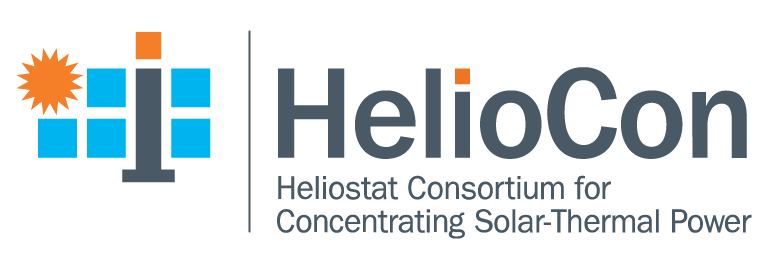
Components and Controls
Lead: Ken Armijo, SNL kmarmijo@sandia.gov
Co-Lead: Matthew Muller, NREL Matthew.Muller@nrel.gov
Heliostats comprise static and dynamic components required to operate within a highly controlled manner to provide accurate solar flux pointing during CSP operation. The general composition includes a reflective area, control system as well as the mounting and tracking mechanism. A reflective area is typically made up of one or more mirrors (also termed as facets). Efforts have required optimization of the component designs to lower costs of customized components such as the drive system, which can account for up to a third of total cost. Larger reflective surfaces and their respective supporting structures are exposed to higher wind loads and can have increased optical losses and mechanical stress levels. Therefore, there has been interest to utilize smaller facet heliostats to optimize size with respect to receiver geometry, Alternative materials and components are being considered to reduce heliostat weight, while improving rigidity and control, while reducing costs. Additionally, resilient control of the heliostat is required for adjustment of heliostat structure so it can accurately track sun position to reflect concentrated sunlight toward a receiver. Wireless and closed-loop controls have become increasingly attractive for new installations as they offer potential cost savings and enhanced performance. Heliostat durability and reliability are not well characterized but are of key importance to ensure high performance and safe operation over the designed lifetime. Component degradation, particularly for drives, mirrors and electronics are also not well documented in literature but are critical for predicting long-term system performance and planning, as well as financing system O&M. Some of the C&C primary gaps have been identified for:
- Lower cost mirror designs are needed with comparable performance to existing glass mirrors.
- Composites or other advanced structures (e.g., torque tubes, pedestals, foundation) are necessary for hitting cost targets and reducing dynamic component costs (i.e. drives).
- Closed loop control must be more broadly applied to achieve higher flux performance and auto alignment/calibration processes.
- Wireless systems approaches must be broadly introduced to capitalize on lower plant cost while wireless risks and technical issues must be avoided. Standardized requirements & testing capabilities are needed.
